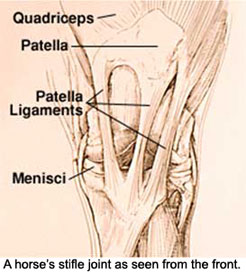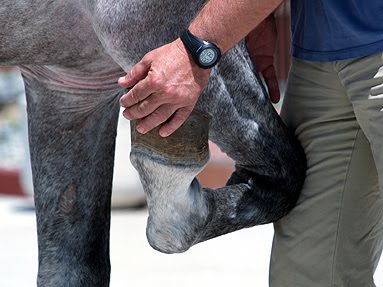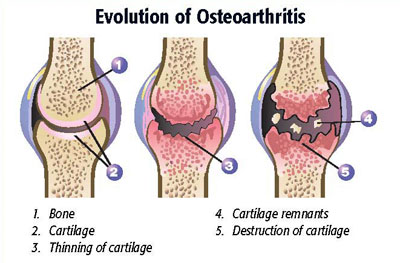If you own a horse, and you use your horse for just about any athletic endeavor, you’ve undoubtedly learned that horse’s have lots of joint
problems. That is, you’ve read, heard, or been told that the various joints of the horse’s body – especially the hocks, stifles, and coffin joints – have a tendency to get inflamed or damaged as a result of athletic activity. When joint problems occur (you’ve been warned), your athletic horse may not perform to his normal capabilities, or, worse, may become lame. While this is all certainly true, the extent to which this is true is subject for discussion. For example, it’s not true that joint problems are the most common cause of horse lameness: front foot problems are. Still, the fact is, if you have a horse that competes in some athletic discipline, someone has probably said something about one or more of your horse’s joints, their importance, and the need to look out for them.
As such, a tremendous amount is invested in the horse community – in terms of time, money, and anxiety – into trying to keep horse joints from having problems. There are myriad supplements, devices, and routines intended to keep your horse’s joints healthy. Most of them are readily available to you over-the-counter (and accompanied by very appealing advertising). Others are only likely to be performed by your veterinarian, for example, injections of therapeutic substances into joints. We’ll tackle all of them.
ARTHRITIS
Arthritis is a general term referring to inflammation of a joint. Pretty much everyone has heard of arthritis. However, even though the term gets thrown around pretty casually, arthritis is not a single disease, or a simple problem; in the vernacular of the stable, mostly, it’s a term that’s synonymous with “bad.” In fact, there are many variants of arthritis, from the simple joint inflammation that’s associated with a sprain of a joint, to the breakdown of joint tissues that occurs in osteoarthritis (a big concern in athletic horses), or the infections that cause septic arthritis (e.g., of newborn foals). Depending on the extent of the problem, arthritis can be a rather inconsequential event in your horse’s long-term health picture, or, conversely, it can mean the end of his athletic career: occasionally, even his life.
Because it’s a complex problem, the diagnosis of arthritis is usually not something that can be made easily, or should be made lightly. Certainly,  there are some horses with osteoarthritis that have obvious problems with lameness, enlarged or swollen joints, and dramatic changes from normal on X-rays. But around the barn, “arthritis” is often also used as a catchall term to suggest a reason for a horse not performing up to owner expectations. So, for example, if a horse doesn’t jump as well as the owner thinks that he should, it’s not uncommon for the owner or trainer to opine that the horse might have a “touch” of arthritis, and prescribe some treatment or supplement, accordingly. That’s not good veterinary practice, it causes anxiety in owners and trainers, and it puts the horse at risk for needless interventions and adverse reactions.
there are some horses with osteoarthritis that have obvious problems with lameness, enlarged or swollen joints, and dramatic changes from normal on X-rays. But around the barn, “arthritis” is often also used as a catchall term to suggest a reason for a horse not performing up to owner expectations. So, for example, if a horse doesn’t jump as well as the owner thinks that he should, it’s not uncommon for the owner or trainer to opine that the horse might have a “touch” of arthritis, and prescribe some treatment or supplement, accordingly. That’s not good veterinary practice, it causes anxiety in owners and trainers, and it puts the horse at risk for needless interventions and adverse reactions.
If you’re concerned about your horse’s joints, get your horse thoroughly evaluated by your veterinarian. Proper diagnosis of joint problems isn’t always easy. Proper diagnosis may require techniques such as physical examination, radiographs (Xrays), scintigraphy, and diagnostic anesthesia. Joint problems may require one of a variety of treatments, from a few days off, to medication, to surgery. They may carry a prognosis ranging from “No big deal” to “It might be time to look for another horse.”
If you think there’s a problem with your horse’s joints, don’t be content with the “What the heck, let’s inject his stifles” approach. Find out what – if anything – is wrong before subjecting your horse to treatment. You’ll be doing the right thing for your horse, and you’ll feel better for having found out what’s going on.







